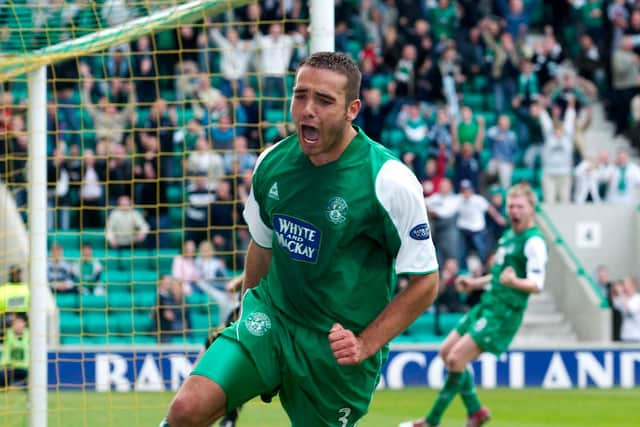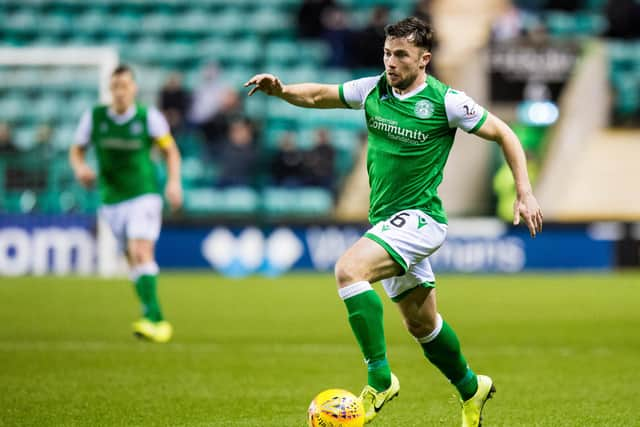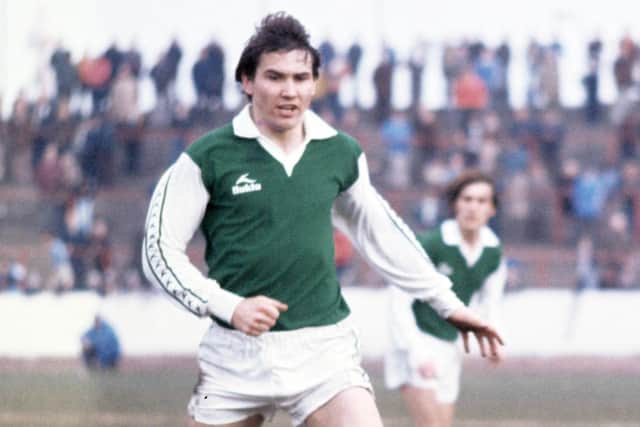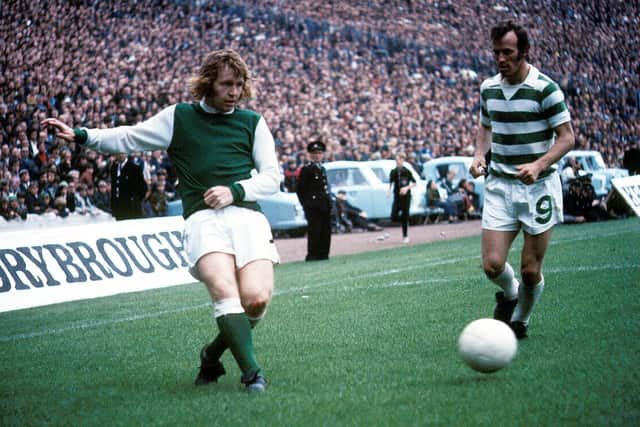The 5 best Hibs defenders of the last 50 years
and live on Freeview channel 276
On Tuesday we picked the five best Hibs goalkeepers since 1970. Now we turn our attention to the defenders:
David Murphy
Within Scottish football there is a strong argument to be made that David Murphy may be one of the most underrated players, at least in the 21st century. Underrated outside of Leith, of course. As the Hibs website put it: “Most footballers divide opinion, but occasionally a player will gain universal admiration from the fans”. For regular viewers of the Englishman he was the complete package, bombarding from left-back.


Advertisement
Hide AdAdvertisement
Hide AdIt is difficult to pinpoint one aspect of his game which stood out from another. He had a chest which was built for American Football but the technical and nimble footwork which was perfect for football. Few wingers during his four seasons at Easter Road got the better of him, simply because he had this build which made it difficult to physically outmanoeuvre. Going forward, however, is what enlivened the Hibs support. His progressive runs were a feature of his game, his ability to move with the ball at pace, while midfielders knew they could zip passes out to him and, with his finesse, he could control with ease while still moving.
He was perhaps Tony Mowbray’s best signing during his tenure in Leith and suited the pizzazz and panache of the team during that era. Derek Riordan, Scott Brown, Steven Whittaker and Kevin Thomson, but Murphy more than held his own, playing key roles in momentous victories, and of course he helped the club win the League Cup.
Lewis Stevenson
‘Ah used tae think you were pish, Stevenson’. In November last year, the left-back recalled a moment seconds after the historic 3-2 win over Rangers in the 2016 Scottish Cup final, when a Hibs fan came up to him on the pitch with a somewhat backhanded compliment following such a momentous moment. While an amusing moment, it shows that some players simply aren’t rated in the eyes of some and, at times, familiarity can breed contempt. But Lewis Stevenson is a Hibernian Football Club living legend.


He is the only player in the history of the club to have won both the League Cup and Scottish Cup with Hibs, and he did so nine years apart. You need a calculator and a lot of time to tally the number of managers and coaches he has played under at Easter Road, plus all the left-backs who he has seen off since making the position his own. He is a one-club man who has made more than 30 appearances for Hibs in ten different seasons. He’s still 32.
Advertisement
Hide AdAdvertisement
Hide AdOne of his finest performances came in the centre of midfield as Hibs easily disposed of Kilmarnock 5-1 in the 2007 League Cup final. But it’s at left-back where his tenacity and sheer consistency has made him a valuable player and role model. A lovely person, soft-spoken, but on the field he unleashes a different persona as he gives his all for the club. That mentality and experience is vital on a pitch and in the dressing room.
Jackie McNamara
When Jackie McNamara senior made his way along the M8 to join Hibs from Celtic the shoes he had to fill were akin to a hobbit stepping into the BFG’s footwear of choice. The deal which brought him to Easter Road saw club legend, hero, idol Pat Stanton move the other way. The atmosphere amongst the fans was bordering on mutinous. What fans, understandably, didn’t know was that when one legend departed another was arriving.


A cruciate injury McNamara had suffered may well have been a blessing as he was nursed back to fitness at Easter Road in his first five months, allowing some of the acrimony to dissipate. When he took to the field with full fitness, he won the Hibs support on his side with an abundance of assured displays.
It wasn’t until the sale of John Blackley when he was moved to defence and gave Hibs a calming presence at the back, one which would go on to play more than 300 times for the club, building up a love for the club which persists until today. McNamara’s story is one of great things arising from bad moments, both for the player and club.
John Blackley
Advertisement
Hide AdAdvertisement
Hide AdWhen you talk of Hibs class, John Blackley was one of those players that epitomised it. He was at the bedrock of Turnbull’s Tornadoes. This elegant maestro possessed an alluring approach to the defensive side of the game. He played behind some of Hibs’ finest midfielders and forwards but could more than hold his own on a technical level and understanding of the game.


Signed to Hibs as a 17-year-old, Blackley actually started as a right-back. A position which he wasn’t enamoured with. It was on switching to a sweeper role where his qualities came to the fore. Yet, he wasn’t in the mould of a stereotypical Scottish centre-back, the one who’d blooter their granny in the air if it ever meant winning the ball. But not Blackley. He was cultured, wanting to play football and endeavoured to get on the ball and play from the back. That’s not to say he wasn’t aggressive. He reckons he was sent off nine times in his career.
He played the game differently in Scotland and did so in a manner which helped Turnbull’s Tornadoes earn the recognition they deserved plus a League Cup winners medal in 1972. On top of that there were seven Scotland caps.
John Brownlie
There are a few similarities between John Brownlie’s career and John Blackley’s. Both were key members of Turnbull’s Tornadoes, both helped Hibs win the League Cup in 1972, both left Easter Road for Newcastle United and both thrived after a positional change. For Brownlie it was a switch from midfield to right-back which saw him become a big influence in one of the best Hibs sides of all time.
Advertisement
Hide AdAdvertisement
Hide AdIn Brownlie, Turnbull had a dynamic defender who would be well suited to the game today with full-backs now encouraged to offer as much in an attacking sense as a defensive one. This was a Hibs team which thrilled crowds, played with flamboyance, a swagger and had personality. The likes of Brownlie and Blackley were key in that, they were more than just defenders, they were part of the team in an attacking sense, starting attacks, joining in. The right-back offered plenty of thrust down the wing but never shirked his defensive responsibilities. And, of course, he was involved in that memorable afternoon when Hibs thumped Hearts 7-0. Not long after he broke a leg which derailed Hibs and himself but he fought back to become a key player once again.
On announcing his place in the club’s hall of fame, Hibs wrote: “At his peak John Brownlie was undoubtedly the best attacking full back in the entire country.”